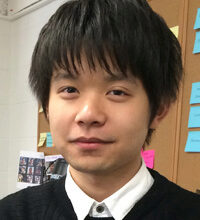One product design student’s experience learning to innovate through an unexpected challenge.

When the project brief was placed in front of me for the first time, I had to fight to restrain the smile escaping the corner of my mouth.
Then I glanced at my three teammates, Emily, Grant, and Yichen, and I saw that they were doing the same thing. We tried to all look professional as we understood that yes, at the request of SKYN’s marketing team in Australia, we were going to re-invent the distribution channels for their condom products. As a team in the Mack Institute’s Collaborative Innovation Program (CIP), our objective was to help this child brand of Ansell to approach U.S. millennial customers in more innovative ways.
The shared smile expressed our mingled feelings of surprise, uncertainty, and eagerness to try. We faced our biggest challenge right at the beginning. My teammates and I all had very limited knowledge about the project context: the contraceptive market. After all, it involved a rather discreet part of everyday life. However, CIP’s lectures prepared us with essential frameworks and tools to break the challenge into smaller key questions for an easier takeoff. Thus the team made a strategic plan quickly and presented our project scope and road map to our client at the early stage, forming a solid track for the in-depth research and the constant communication with SKYN’s team that followed.
Diverse Perspectives
And, here we had a perfect team with different professions blended in. Emily studied Nursing and Health Care Administration and has rich experience working in multiple healthcare organizations. Grant was an MBA student and focused his explorations on retail and new distribution models. Yichen, like me, was a student from the Integrated Product Design program, where our daily practice was converting people’s ambiguous desires into attractive products and experiences through design.
“Taking a product design student’s point of view, I especially paid attention to connecting statistics with customers’ real life behavior.”
Our research and analysis benefited from this diversity. As a team we were able to look into the contraceptive technologies, the market trends, and the targeted segments from different perspectives. We also gathered multiple resources to ensure our assumptions were backed by industry updates, experts’ opinions, commercial data, and the voice of customers. Everyone gave professional-level input. Taking a product design student’s point of view, I especially paid attention to connecting the statistics with the customers’ real life behavior. I also made logical stories out of our interviewees’ personal expression, to explain the overall market trends and to uncover opportunities.
After the final presentation, from the excitement of Ansell’s CEO and the SKYN marketing team, I knew we had done a good job. But the greater fulfillment came more from the process. I learned while looking into the market from our client’s perspective, and I learned while considering the information from my teammates’ perspectives. The project has been a wonderful exploration for me as a design student, about how to weave design thinking methodology into the business consulting protocol to capture bigger ideas.
I would recommend CIP to students from any background who want to work on a multidisciplinary team, join an enterprise eager for disruptive innovations, and learn how to collaborate to innovate within a real industry.
Sign up here for email notifications about CIP recruitment. Read about more students’ CIP experiences here.
About the Author
 Aobo Zhou is a Master’s student in the Integrated Product Design Program at University of Pennsylvania. He holds dual Bachelors in industrial design and mechanical engineering from Zhejiang University in China. With hybrid skills of physical product design and experience design, he is enthusiastic about taking a user-centered approach to envision, design, and commercialize the next ideas of how people access and interact with products and services.
Aobo Zhou is a Master’s student in the Integrated Product Design Program at University of Pennsylvania. He holds dual Bachelors in industrial design and mechanical engineering from Zhejiang University in China. With hybrid skills of physical product design and experience design, he is enthusiastic about taking a user-centered approach to envision, design, and commercialize the next ideas of how people access and interact with products and services.



